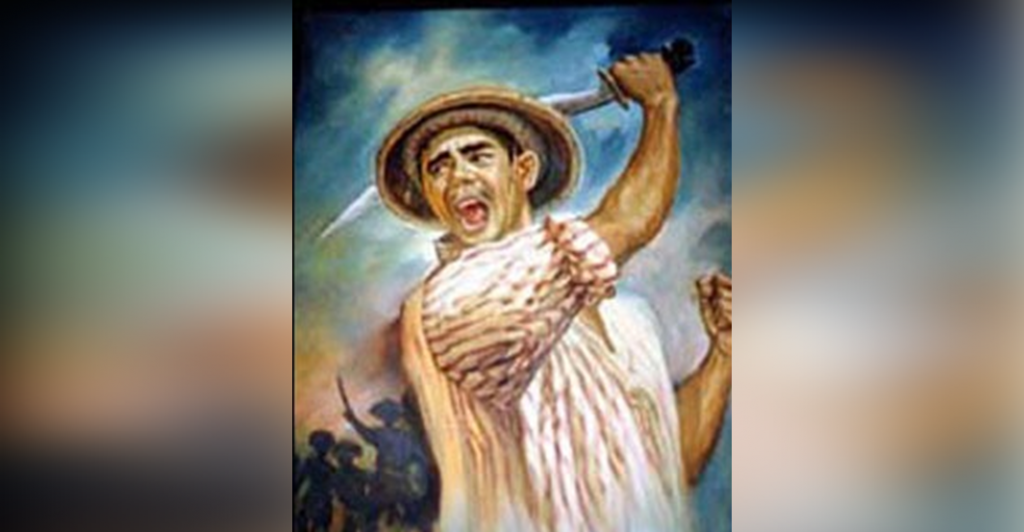
Proem
The book “Historia General de Philipinas” authored by Fr. Juan de la Concepcion was published in 1792. So it must have been written five (5) before or sometime 1787 or 43 years since the start of the Dagohoy Revolution in year 1744. It is somewhere at the middle of the revolution that lasted 85 long years.
There are other sources of information regarding the Dagohoy Revolution but Fr. Concepcion’s story contains some information not found in our standard history books.
Cause
Just like other sources, Fr. Concepcion said that the cause was the death of the Alguacil or Constable who was sent to arrest an apostate Christian. The Constable happens to be a brother of Dagohoy.
Dagohoy fetched the body of his dead brother and brought to Inabanga for burial. The priest, Fr. Morales asked for the usual burial payment. Dagohoy refused to pay because his brother died in the service of the church. Fr. Morales said that Dagohoy’s brother died in a duel and church rules prohibit the burial in sanctified grounds the body of a dead protagonist.
Fr. Morales said that the infraction could be pardoned if the burial fee will be paid. Dagohoy refused to pay because his brother died in the service of the church.
Both sides were obstinate to stand their ground. After three (3) days the dead body was still unburied and already described as “que se pudriese, y se vermináse, haciendoesahedoryainsufribie.” (It was already rotting and eaten by worms and having insufferable odor.”
Thereafter, “(Dagohoy) an outstanding native (indio), Caveza de unaporcion de naturales, y muyrespetado de ellon: convoculos a todos. (Head of a portion of the natives and very respected, convoke the people…)
The statement “Caveza” is not found in other references about Dagohoy. There is a record that Dagohoy was a Cabeza de Barangay. However a barangay will consist only of 40 to 100 families. If we say 100 families multiplied by 5 members, the total will be 500 members. However, according to the statement of Fr. Concepcion, three thousand (3,000) followed Dagohoy to the mountains and rebelled against Spain, the church, and the priest.
Therefore the Spanish word Caveza must be translated as “leader”. The group then proceeded to raid the San Xavier estate of the Jesuits near the town of Inabanga. Taking with them the cows, carabaos, horses, and other animals and useful things and destroying the unusable items.
Killing of Fr. Lambertí
Dagohoy vowed vengeance against Fr. Morales of Inabanga, and any Jesuit priest for that matter. He could not find a chance to kill the priest of Inabanga but an opportunity arose for the killing of the priest of Jagna (Bohol) name Lamberti.
According to other records, Fr. GiusseppeLamberti, S.J., was killed on the night of January 24, 1746. It was already more than one year since the start of the rebellion on July 4, 1744.
An unnamed man from Jagna, Bohol wanted to get married. He was instigated by Dagohoy that he will be given the demanded carabao (as dowry) if he will kill the Jesuit priest of Jagna. The man agreed.
One night (Jan 24, 1746) the man went to the quarter of the priest and armed with a dagger (puñal). He asked the boy who was guarding the door as where the priest is. The boy answered, “In his quarter, praying”. The man then entered and stabbed the priest and fled. The boy, after seeing the incident got rattled and also fled. The dead body was discovered later by the butler who brought food for the priest’s supper.
According to the story, when the murderer fled towards the mountains, he made a wrong turn and when morning came, he found himself in the poblacion of Jagna. He was then arrested by the Captain and the principales (prominent men). The proof that he was the murderer was a charcoal mark on the man’s palm. It was said that the charcoal mark could not be in the man’s palm if he was not in the priest’s quarter.
He and his prospective father-in-law were arrested and made to confess. The boy who acted as a porter was also arrested. They were tried by the Alcalde Mayor (Provincial Governor) of Cebu who came to Jagna. When the three were found guilty, they were brought to Cebu and executed.
The people of Jagna accepted the punishment of the 2 men because they confess. However the people did not accept the punishment of the boy. The people got angry and sided with Dagohoy.
This is a very questionable story, but that was the official story.
Killing of Fr. Gaspar Morales
On April 25, 1746 Fr. Gaspar Morales was killed in the forest of Inabanga. Fr. Morales led some workers inside the forest in order to cut a log to be made into a ship for the use of Fr. Morales. The native workers were not treated well by the priest and they got angry. The dry grasses were set into flames and when Fr. Morales went there to verify who started the fire, he was struck by a lance and killed. This story of how Fr. Morales was killed is similar to other stories, except that in the other stories it was an “arrow” that killed Fr. Morales and not a lance.
The native worker dispersed and the body of Fr. Morales rotted for 3 to 4 days before it was recovered. Dagohoy had his revenge.
